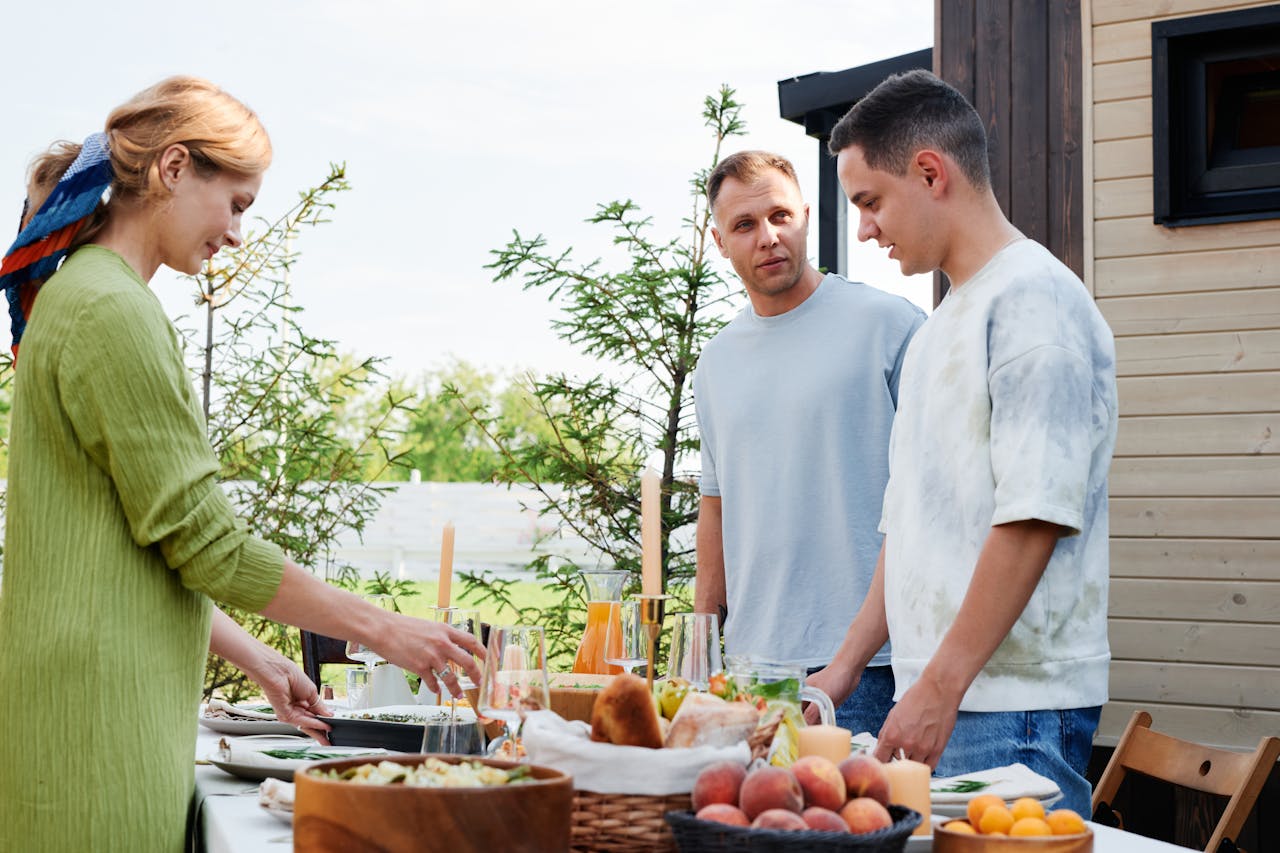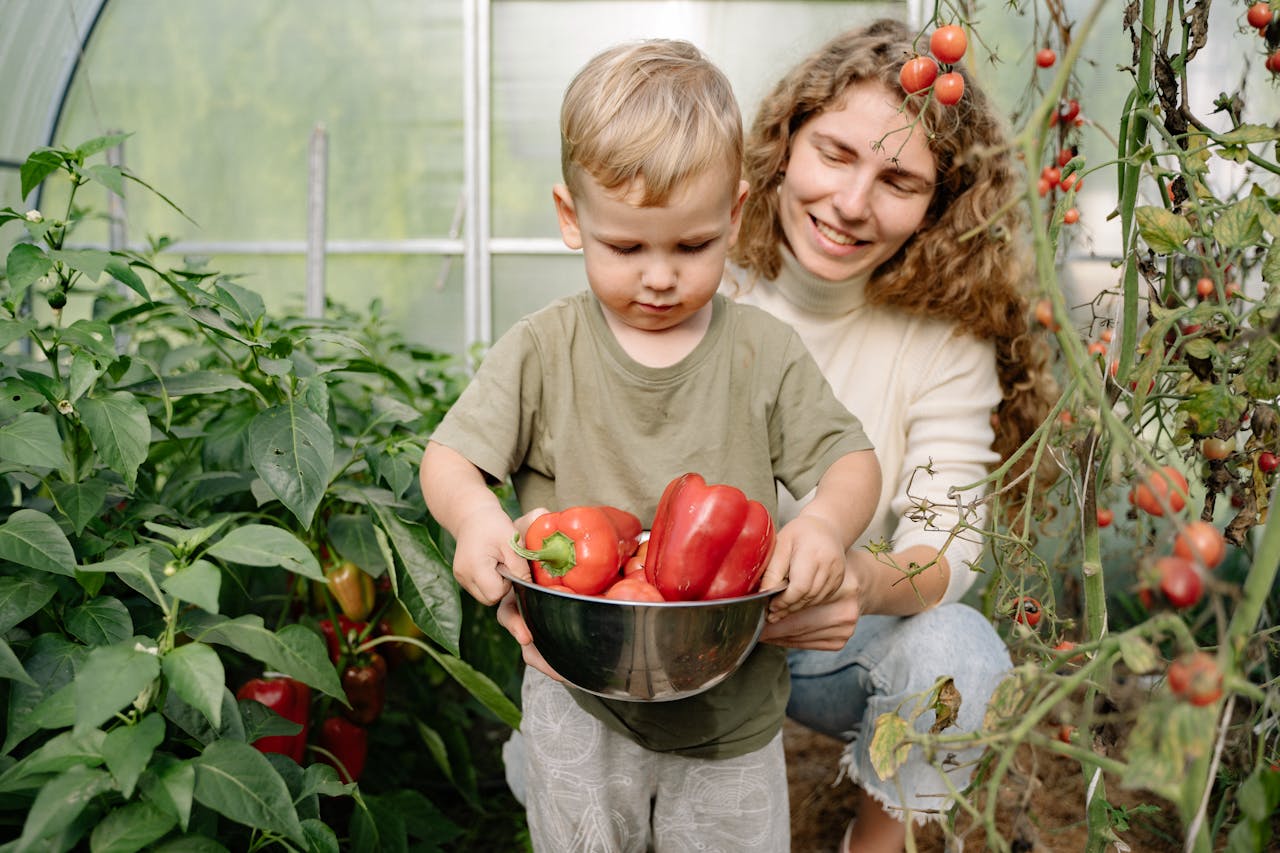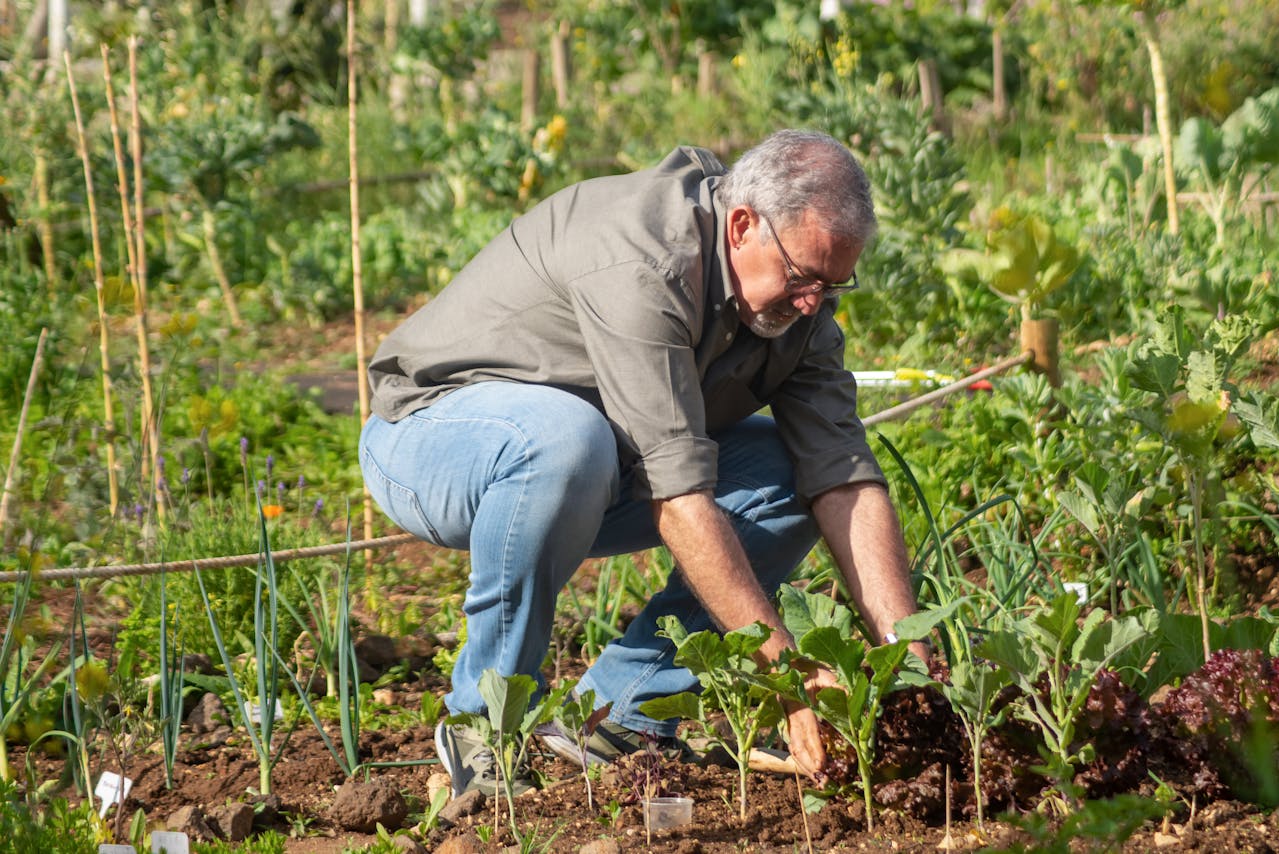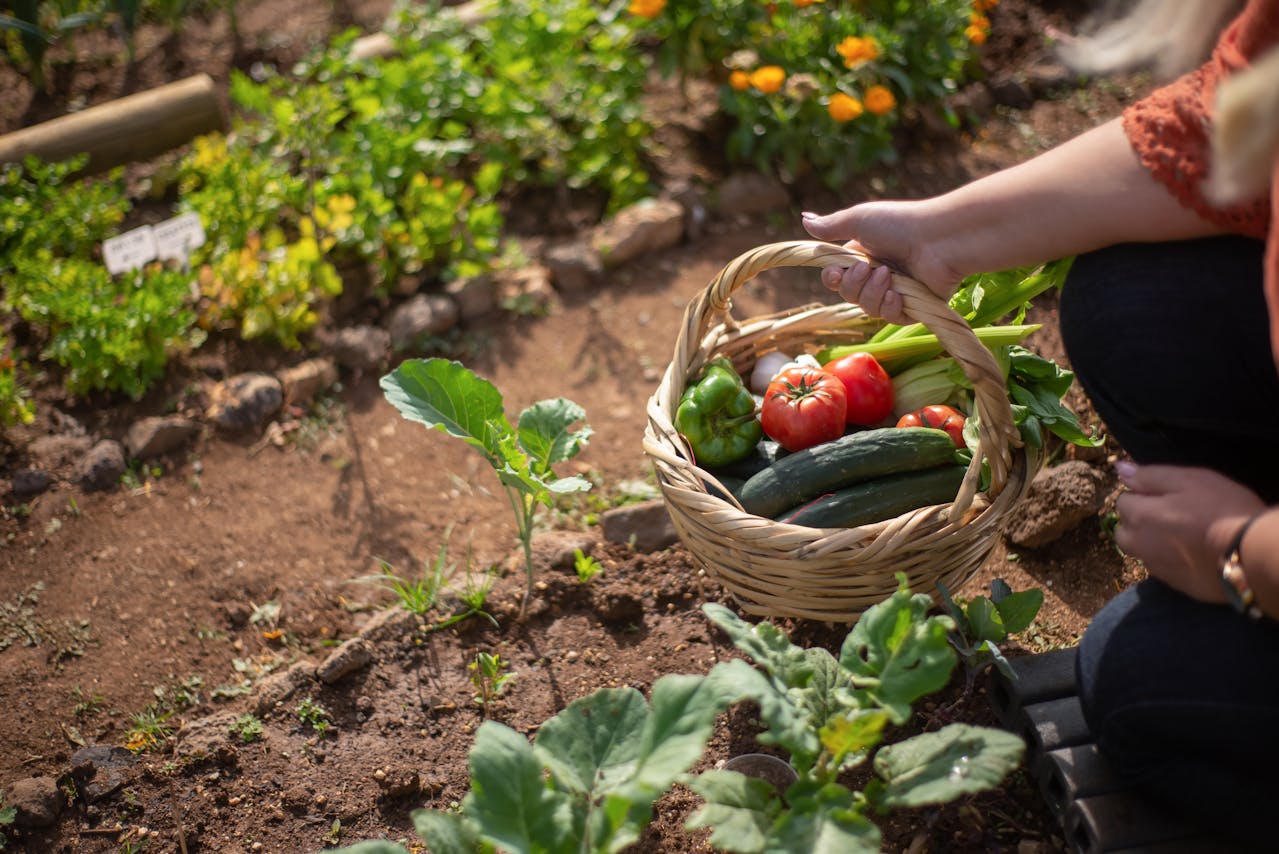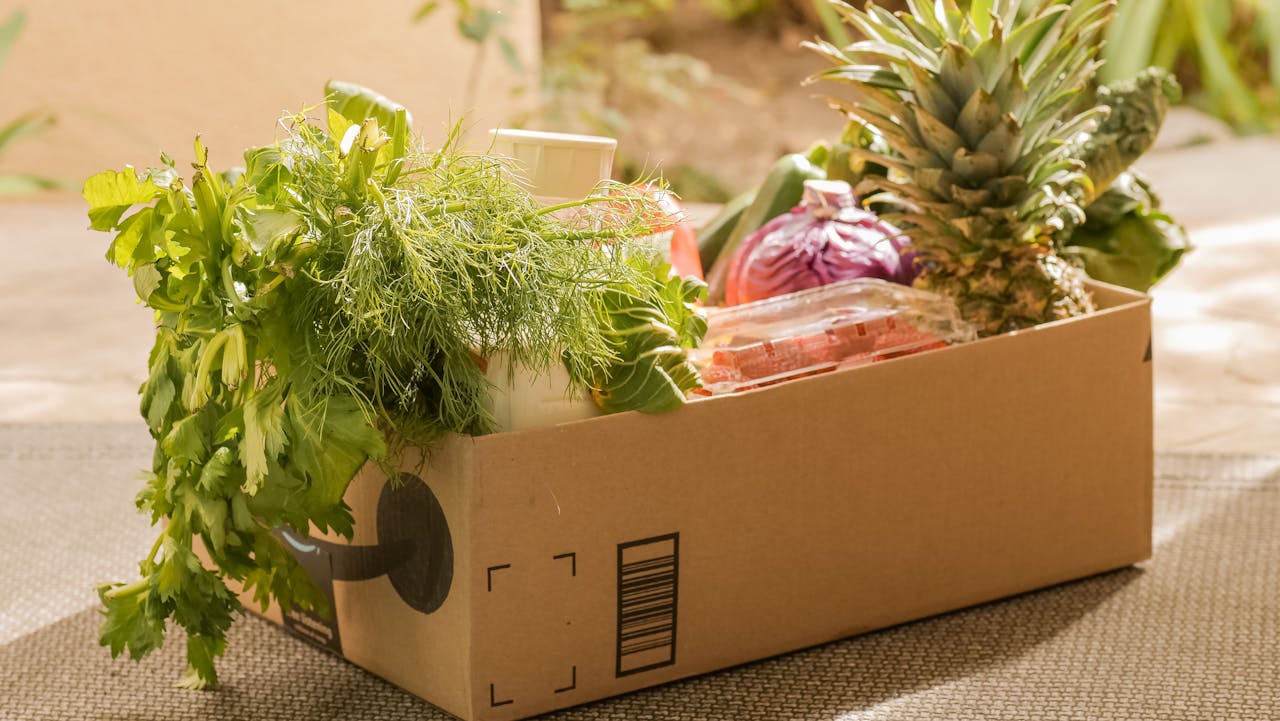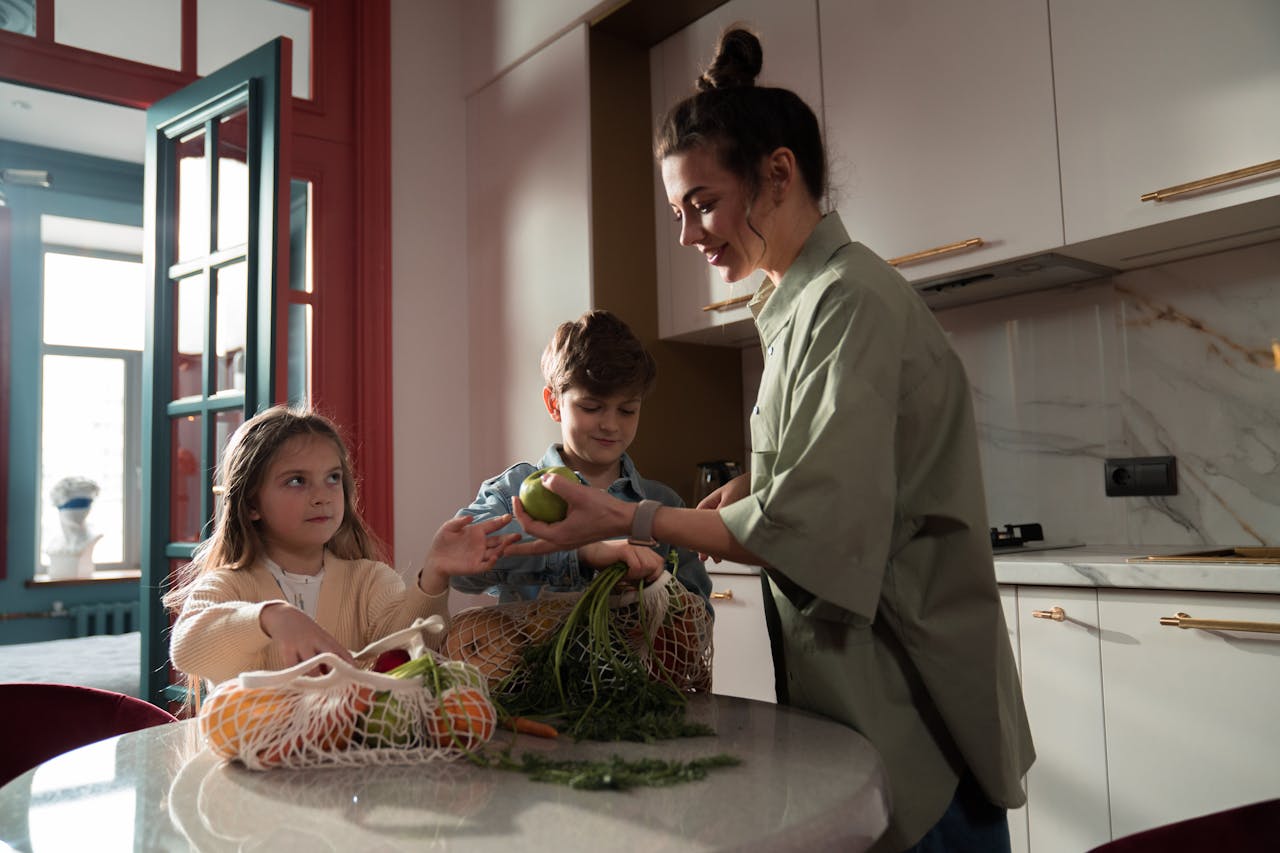
Building Strong Community
March 17, 2025Becoming Food Resilient Can Save Money
Many of us are looking for ways to save money so we have the funds to spend on things that enhance our lifestyle and lower stress. Is it feasible to grow your produce in your backyard? How much time will it take? How about the cost? It’s easier than you think to move from recreational gardening for an occasional fresh ear of corn to growing most of your family’s fresh vegetables year-round from your garden. A year-round garden takes some planning and initial cost, but the rewards are worth the time, effort, and money.
It has also been proven vegetables that children help grow and harvest they tend to enjoy so much more–your answer to picky vegetable eaters! Depending on the size of your family, the age of your children, the size of your appetites, and how much space you have to grow, these factors will dictate your garden size and so much more.
Emergency Proofing Your Food Supply from Your Garden
Many factors go into planning the size of your garden. A general rule is 200 square feet of garden for each person in your family; this allows for a harvest that would feed everyone year-round. For a family of 4, you would be need 800 square feet, or about 25 feet by 32 feet. If you use intensive planting methods, the size requirements get greatly reduced. Planting a garden in raised beds is also an option. We fed our family year-round with six, eight-foot by six-foot beds.
Raised beds and a French intensive planting method allow you to use much less space and still feed a family of four year-round. The French intensive method of planting encourages you to plant vertical vegetables next to low-lying or root vegetables to make the best use of space. It is possible in one 6×8′ raised bed to plant enough pole beans for a family of 4 along with carrots, all in one bed. We generally have used 5-6 eight by six foot beds that are twelve inches deep to feed our family of six, and we have more than enough to store or give away.
It is possible with hydroponics to grow your vegetables indoors or on a deck year-round, so even if you don’t have a sunny backyard for a vegetable garden, you can still create food security. There are now mini greenhouses that fit on decks, providing year-round vegetables.
What Vegetables to Plant
Planting what your family loves to eat is your best bet and for the least amount of waste. Turning gardening into a family project helps picky eaters like vegetables more too. We have an amazing climate in Sonoma County that allows for vegetable crops year-round. We have approximately 270 days of frost-free weather in most Sonoma County areas. The UC Master Gardener Program has really good information on growing your own vegetables. Their website covers planning, seeds and transplants, soil improvements, time of planting, tools, vegetable care, common pests, harvesting and storing, and cool versus warm season vegetables.
We use hoops in our garden year-round. In the winter, the hoops are covered with clear plastic, providing greenhouse conditions. When we plant seeds and seedlings, we cover the hoops with bird netting to ensure our plants get a good start. If we are having a hot summer, we use shade cloth on the hoops over the shade-loving vegetables so they don’t bolt or wither in the sun. You can use rebar stakes next to your raised beds, with irrigation hoops, heavy mil plastic, and snap connectors to make a great greenhouse situation to protect your plants and extend your growing season.
How Much Vegetables Should We Plant?
Your vegetable list should have a few extra plants added to it if you wish to can or dry your crop for storage or share with friends. This is a beginning list of vegetables for a family of four:
- Beets-10-oot row Spring & Fall Crop
- Bell Peppers- 5 to 10 plants planted in early Spring
- Broccoli-5 plants Cool Season Crop usually planted in early Fall
- Brussel Sprouts-5 plants Cool Season Crop usually planted in early Fall
- Bush Beans- 15-foot row Succession Plant to harvest throughout late Spring through early Fall
- Pole Beans- 15-foot row Plant early Spring
- Cabbage- 5 plants Spring and Fall crop
- Carrots- 10-foot row Succession Plant to harvest throughout late Spring through early Fall
- Cauliflower- 5 plants Spring and Fall Crop
- Swiss Chard- 5 plants will re-grow after harvesting the outer leaves
- Corn-15-foot row or best to plant to parallel rows for pollination Succession Plant
- Cucumbers-2 -3 hills Single planting
- Eggplant- 6 to 8 plants planted early Spring
- Kale- 5 plants Single Planting early spring
- Lettuce- 10-foot row-Succession Plant and many varieties if you cut the outer leaves the plants will continue to grow
- Onions- 5-foot row early Spring Planting
- Potatoes- 20 to 30 potato seed eyes planted very early Spring, usually in March in Sonoma County
- Peas or Snap Peas- 10-foot row, Succession Plant early spring through Fall
- Peppers- 5-foot row- Single Planting early Spring
- Radishes- 5-foot row- Succession Plant
- Spinach- 15-foot row planted early Spring and also early Fall
- Summer Squash- 2-3 hills Single planting, multiple varieties
- Tomatoes- 5 plants, more if you wish to make sauces, single planting, multiple varieties
- Turnips- 10-foot row Spring and Fall crop
- Pumpkins, Watermelons, and Melons only if space and climate allow for a long growing season
The above list should adequately feed a family of four with enough leftovers for storage, sauces, and giving to friends and family.
How About a Food Co-Op
Starting a food co-op is simpler than you think, and you can save your family and friends up to 60% on your monthly food bill. Starting a food co-op can be as simple as a few families deciding to buy from local vendors together to reduce prices, or it can have a storefront and be an ongoing business for your community. The food co-op we talk about today is a simple version where a small community comes together once or twice a month to distribute food together.
I have formed two food co-ops in the past within small communities. The first food co-op was established in our local church, and the other was a group of mothers who decided to get together to start a food co-op. We were called the Apple Family Food Co-op in Sonoma County. Some of my fondest memories are when we were outnumbered by toddlers three to one. We loved getting organic food at a fraction of the cost, and it also formed a tight community of families that helped each other out in many ways as our kids grew up over the years.
The Basics of Starting a Food Co-Op
We share some thoughts on how to start a food co-op in your local neighborhood or community. There are now so many organizations supporting food co-ops big and small, along with some amazing publications. You’ll have a lot more support for your co-op from the beginning than we did years ago. Here are some things to think about:
- Assess if there is a strong need among your friends or your community. You might be motivated to start a food co-op due to inflation and the high cost of food. You see your family’s food bill climbing each month, and you still want to provide nutritious food for your family. many times. Usually, if you have a need, others do too! Maybe you want more organic food but don’t want the increased cost. You might be motivated to deal more directly with farmers and ranchers to provide food for your family. You would like gluten-free options, but almond flour and coconut flour are very costly. Or you might want to cut down on trips to the grocery store to save time and money.
- Find a group or form one if you don’t already have one. Social media can be a great way of connecting with your local community and sourcing a local food co-op. Also, community bulletin boards, your children’s school, 4-H, and after-school sports can be a way to connect with other families who want access to better food for less money. You can also ask everyone to put out the word to their friend list to get them interested in forming a local food co-op.
- Find your suppliers. Check with people who you know. It’s amazing how connected we areSaving Money with our friends and community. We made a list of people we knew and we were amazed how many contacts we had that could supply our local food co-op. Restaurants are a good first contact or small vegetable stands because increasing their orders can help bring down their costs. There are also several suppliers that you can find with a local search. Look for wholesale produce suppliers, meat suppliers, grains and staples, and dairy suppliers. We have so many of these suppliers that are local to our community.
- Figure out distribution. Will you have a monthly order and pickup? Does twice a month work better for your group? We had a monthly pickup and everyone got together with containers and utensils to help divide products. We had hanging scales and other scales to weigh containers and products. Everyone paid for their order ahead of time and we divided the cost, including products, taxes, and shipping cost, between everyone. We liked to keep things simple so there was no storage involved. You can make this process as simple or as complicated as you want. We wanted simple. Currently, we are talking to a restaurant that is open three days a week, and we would use their location to divide and distribute products. It’s good for the restaurant for marketing and outreach, it also helps them increase orders and lower their overall costs.
- Set up your details and distribute your order. You can set up a banking account and take checks from everyone. With the ease of the internet, you can take payments through Zelle or Venmo to the bank account that pays for orders. If you want to be totally online, people can place their orders and pay online. Keeping it simple will keep the stress low and the benefits high.
Setting up a food co-op helps lower your family’s food costs and builds a strong community. Not to mention the other opportunities that might spring from forming a food co-op and more community involvement.

